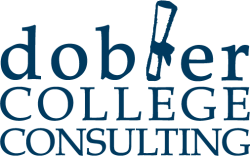
Elizabethtown College
With the launch of the Common Application on August 1st, the 2012-2013 college application season is upon us. If you’re not familiar with the Common Application (more commonly referred to as the Common App), here’s a nice little post from stateuniversity.com that will get you caught up.
Last week I talked about the different ways of applying to colleges. Your level of interest and your qualifications are what will help you decide which one is the way to go. For now, let’s talk about the differences and how they affect you.
Early Decision, also known as ED, is where you choose to apply anywhere from November 1st to December 1st, and can expect to hear a decision by December 15th. Some schools will offer two rounds of early decision where ED I applicants hear in December and ED II applicants, who will apply typically around the same time as regular decision candidates, will expect to hear in February.
Early decision can be a great idea if you know, without a doubt, that you are in love with everything a school has to offer, you know you can afford to attend that school and you are ready, willing and able to commit to that school. You’re all in with early decision and the risk level is significant if you haven’t done your homework ahead of time.
Some things to consider with early decision:
You’re allowed to apply early to ONE school only and, if accepted, that decision is binding. That’s it. There’s no backing out of an early decision acceptance. This is why your love for the school must be true – you won’t have a financial aid award yet and you will have to contact the other schools at which you submitted regular applications and notify them that you are withdrawing those applications immediately. Some students will point to higher acceptance rates to justify their choice to apply early – for this past year, the regular acceptance rate at Duke was 11% while the early acceptance rate was 25%; for Johns Hopkins the rates were 16% and 38% respectively. While the acceptance rates are typically higher, the talent pool is also that much more competitive. Just spend a few minutes on College Confidential and search for “early decision” to tap into the mania.
Early Action, or EA, is where applicants complete applications in November or December and expect to hear an answer by the start of the New Year. Early action applicants can be accepted, denied or deferred to the regular decision round of applications. Unlike early decision, early action applicants are not bound to their acceptance and have the choice to commit by the May 1st deadline or attend another school altogether.
There are variations of early action policies so it is important to check with each school first. Some schools are considered single choice early action meaning that they will not allow applicants to apply to any other schools early. Other schools are considered unrestricted and allow applicants to apply early decision or early action to any number of schools.
Early action is great because you have the benefit of applying early and showing a school that you are a very interested applicant while also keeping your options open.
Regular Decision is the process by which you apply by each college’s published deadline which is usually around January 1st. Once the application and materials have been sent, applicants can expect to hear a decision by April 1st. Regular decision applicants can be admitted, denied or placed on a waiting list. More on waiting lists another day.
Regular decision is the vanilla of the application world. It’s plain and simple and doesn’t come with any surprises. Well, that’s not entirely true. Students who choose not to pay attention to what a school is looking for in its applicants can often be met with very disappointing surprises.
Rolling Admission is where students are admitted on an ongoing, or rolling, basis. The schools begin making decisions in the early fall and continue until they have met their requirements for the new freshman class. Rolling admission provides students with a long period of time in which they can apply – often several months. Colleges may accept or reject an applicant right away, or they may hold off for a period time in order to compare him or her to other applicants. Depending on how strong or weak of an applicant they are, students may also find themselves on the waiting list.
There are several pros to rolling admission. Applicants can apply as soon as the application season is open and, therefore, demonstrate their interest to a school. Remember, colleges are looking for students who are more likely to enroll. Applying early on is a great way to show that you are that student. Because decisions are made on an ongoing basis, the earlier you apply, the earlier you can expect to hear a decision. It can feel great to get that first acceptance out of the way and may just help you enjoy the holidays with your family and friends that much more.
For the procrastinators, rolling admission is great because you can apply when you’re ready. I’m not saying you should work at a snail’s pace, but let’s be honest – some of you just do. Maybe you want to wait for first semester grades before you apply because you know you have some strong grades coming. Maybe your SAT scores were low and you wanted to take them again in December or January. Maybe you just happened to come upon a school mid-year that you hadn’t thought of before and now want to apply – for any of these reasons and more, schools with rolling admissions grant you the opportunity to apply later in your senior year.
Now, for every pro of rolling admission there are also cons. Just because decisions are rendered on a rolling basis, doesn’t mean everyone will hear right away. If your application isn’t the strongest, you could end up waiting several weeks or more before you hear back. This can get very frustrating when your friends hear back from the same school and you’re stuck waiting and wondering. Schools with rolling admission will start awarding aid on a first-come, first-serve basis. Funds are limited so if you apply too late, your financial aid award may not be very helpful. Housing could also be an issue if you apply too late.
As with anything in the college application process, do your homework early on. Check out the admissions webpage for any schools you are interested to find out which types of applications they offer.
If you have any questions or comments about the types of applications available to you and which one might be the best way for you to go, please use the comment box below – I would love to hear from you!
You can also email me directly at eric@doblercollegeconsulting.com.

 The other day I visited
The other day I visited 